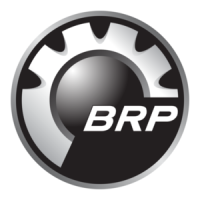
Do you have a question about the BRP EVINRUDE E-TEC E60DPLAA Series and is the answer not in the manual?
Provides critical safety warnings and guidelines for operating and servicing the outboard. Emphasizes reading all instructions before work.
Lists abbreviations for units of measurement and technical terms used throughout the manual for clarity.
Details responsibilities for manufacturers, dealers, and owners regarding emission standards and regulations.
Explains the system for designating outboard models, including prefixes, horsepower, and feature codes.
Provides detailed technical specifications and data for 40-60 HP Evinrude E-TEC AA models.
Lists standard torque values for various fastener sizes, essential for proper assembly and maintenance.
Outlines recommended inspection and maintenance tasks for prolonging outboard life, including intervals.
Provides instructions and safety warnings for safely lifting the outboard using appropriate fixtures.
Covers common practices for rigging, including control cable identification, installation, and lubrication.
Details procedures for adjusting steering friction, throttle friction, and tilt limit switches for optimal performance.
Lists essential checks to perform before operating the outboard, covering engine monitoring, controls, and systems.
Describes the cooling system components, inspections, and procedures like engine flushing and running on a hose.
Covers lubrication points and procedures for steering systems, tiller handles, swivel brackets, and linkages.
Provides instructions for checking, draining, and filling the gearcase lubricant, emphasizing proper lubricant types.
Details checking reservoir fluid levels, system capacity, and tilt support engagement for trim and tilt systems.
Covers spark plug removal, inspection, correct gap setting, indexing, and installation procedures.
Describes inspection and maintenance of fuel filters, oil filters, oil reservoir, and hoses and connections.
Explains the function of sacrificial anodes, metallic component protection, and exterior finish maintenance.
Provides procedures for fuel system treatment and internal engine treatment for proper outboard storage.
Outlines recommended checks and services before preparing the outboard for seasonal use.
Details the installation of the latch hook for the upper engine cover.
Covers the removal and installation procedures for the lower engine cover.
Provides instructions for installing the latch handle onto the lower cover.
Details the procedure for installing the trim switch into the engine cover.
Introduces the EMM as the water-cooled engine controller and its basic functions.
Lists the various processes and functions controlled by the EMM, including ignition, fuel, and monitoring.
Explains the function of the EMM's four LED indicators for system status and diagnostics.
Describes the internal sensors monitored by the EMM, such as temperature and voltage sensors.
Details external sensors that provide data to the EMM, including temperature, pressure, and throttle position.
Explains the function and testing of the throttle position sensor for engine operation.
Describes the crankshaft position sensor's role in engine timing and speed, and its testing.
Covers using Evinrude Diagnostics software for troubleshooting, checking parts, and making system adjustments.
Details diagnostic tests for system components performed while the outboard is not running.
Explains diagnostic tests performed while the outboard is running to isolate issues.
Provides procedures for checking and adjusting EMM ignition timing for synchronization with crankshaft position.
Covers calibrating the throttle position sensor to synchronize with throttle plate opening.
Explains the software programming required for fuel injector compensation and installation.
Outlines general diagnostic steps including visual and operational inspections.
Provides a guide for diagnosing common outboard starting and running issues.
Details cylinder drop tests and fuel control adjustments to diagnose performance issues.
Explains how to interpret EMM LED indicators for system status during starting and running.
Covers testing of ignition system components including coils, stator, and wiring.
Provides procedures for testing fuel pump and injector circuits for proper fuel delivery.
Details testing procedures for the exhaust water valve to ensure proper operation.
Provides a visual overview of electrical and ignition system components and torque specifications.
Details connector pin assignments and wire colors for engine and stator harnesses.
Emphasizes the importance of clean and tight ground connections for reliable performance.
Covers testing procedures for key sensors like CPS, TPS, Engine Temperature, and Air Temperature sensors.
Provides procedures for testing stator winding resistance and voltage output for charging system checks.
Details testing of the 12 V and 55 V charging circuits, including battery and alternator performance.
Explains the operation and wiring of the electric start circuit, including the starter solenoid and key switch.
Covers testing procedures for the starter solenoid, voltage drop, and no-load current draw.
Details testing procedures for the key switch and neutral start circuit for safe operation.
Explains how to test the critical emergency stop system for proper engine shutdown.
Covers testing procedures for the SystemCheck gauges and warning lights.
Provides procedures for servicing the flywheel and stator, including removal and installation.
Details the removal and installation procedures for ignition coils.
Covers adjusting the timing pointer, verifying ignition timing, and TPS calibration.
Provides procedures for removing and installing the electric starter motor.
Details procedures for servicing various electrical connectors like Deutsch, AMP, and Packard.
Illustrates the correct routing of fuel hoses for both 2-cylinder and 3-cylinder models.
Presents detailed circuit diagrams for the fuel system, showing component connections.
Outlines critical requirements for boat fuel systems, including regulations and fuel flow specifications.
Specifies the required octane rating, acceptable fuel additives, and handling precautions for gasoline.
Describes key components of the fuel system, including the fuel lift pump, filter, and injectors.
Details the procedure for priming the fuel system, including vent line clamp removal and filling the vapor separator.
Covers diagnostic tests for fuel system pressure, regulators, injectors, and pumps.
Provides detailed service procedures for individual fuel system components like filters and pumps.
Provides an exploded view of the oiling system components with torque specifications.
Illustrates the oil supply routing for 40-65 HP and 75-90 HP models.
Presents the electrical circuit diagram for the oiling system, showing component connections.
Details lubricant recommendations and engine lubricant specifications for various temperatures.
Describes the key components of the oiling system, including the oil tank and injection pump.
Explains the low oil warning system, including activation signals and approximate oil reserve.
Details the NO OIL warning system, including pulse counts and recovery procedures.
Covers EMM programming for oil injection rate and the Set Oil Type option.
Provides procedures for break-in oiling after powerhead rebuild or for new outboards.
Describes how to prime the oiling system using Evinrude Diagnostics software.
Covers diagnostic tests for the oil injection pump voltage, resistance, and flow.
Details service procedures for oil distribution hoses, oil tank assembly, and oil injection pump.
Illustrates water flow paths and hose routing for 2-cylinder and 3-cylinder models.
Describes key cooling system components like water pump, exhaust housing, thermostat, and relief valve.
Explains the two-stage cooling system operation based on water pump pressure and thermostat control.
Covers checking engine temperature using software or a pyrometer method.
Guides troubleshooting for low idle operating temperatures, focusing on thermostat and pressure relief valve.
Provides procedures for removing, cleaning, and installing the temperature sensor.
Details the disassembly, inspection, and assembly of the thermostat.
Covers the disassembly, inspection, and assembly of the pressure relief valve.
Provides exploded views of powerhead components with torque specifications for 2-cylinder models.
Details procedures for removing the powerhead from the outboard, including safety warnings.
Covers the removal of various systems and components prior to powerhead disassembly.
Provides steps for disassembling the crankcase, including removing screws and separating parts.
Details the procedure for removing the cylinder head, including thermostat and seal replacement.
Explains how to identify and remove connecting rods and pistons, with critical notes on orientation.
Covers the procedure for removing the crankshaft, including seal replacement.
Provides instructions for cleaning cylinder blocks and heads, removing carbon deposits and contaminants.
Guides visual inspection of powerhead components for wear, damage, and proper dimensions.
Details the assembly procedures for crankshaft, pistons, connecting rods, and cylinder head.
Covers the final assembly steps for the powerhead, including installing various systems and components.
Provides procedures for mounting the powerhead to the exhaust housing, including torque specifications.
Provides exploded views and torque specifications for exhaust housing components.
Details the disassembly and assembly of the stern bracket for 40-60 HP models with power tilt.
Covers the disassembly and assembly of the stern bracket for 75-90 HP models with power tilt.
Details the disassembly and assembly of the stern bracket for 40 HP manual tilt models.
Provides procedures for removing, disassembling, inspecting, assembling, and installing the standard tiller handle.
Details the removal, disassembly, and installation procedures for the long handle tiller.
Explains how to adjust the shift linkage for proper gear engagement and neutral positioning.
Lists critical final adjustments after powerhead installation, including timing and diagnostics.
Provides exploded views of the 40-60 HP gearcase with torque specifications.
Covers propeller inspection, selection criteria, and hardware installation procedures.
Details the procedure for testing the gearcase for leaks using pressure and vacuum testers.
Covers the removal, installation, and servicing of the gearcase for 40-60 HP models.
Provides disassembly, inspection, and assembly procedures for the water pump.
Explains how to check and adjust the shift rod height for proper gearcase shifting.
Outlines the pre-disassembly inspection and procedures for removing major gearcase components.
Covers servicing of pinion bearings, water intake screens, and shifter components.
Details the process of shimming the driveshaft for correct gearcase backlash and clearance.
Provides instructions for assembling the gearcase, including shift housing, pinion gear, and propeller shaft.
Covers the removal, installation, and servicing of the gearcase for 75-90 HP models.
Provides disassembly, inspection, and assembly procedures for the water pump.
Explains how to adjust the shift rod height for correct gearcase shifting on 75-90 HP models.
Outlines pre-disassembly inspection and component removal for the 75-90 HP gearcase.
Covers servicing of pinion bearings, seals, and shifter components for 75-90 HP gearcases.
Guides the final assembly and adjustments for the gearcase, including leak tests and lubrication.
Provides exploded views of trim and tilt components with torque specifications for 40-60 HP models.
Explains the power trim/tilt system components and the principles of trim and tilt adjustments.
Covers general checks for fluid leakage, battery condition, reservoir fluid level, and stern bracket inspection.
Provides guidelines for diagnosing common trim/tilt unit problems like cylinder leakdown and slow operation.
Details testing procedures for trim and tilt relays, motor current draw, and no-load motor tests.
Explains how to test the trim gauge for proper indication of trim position.
Covers testing the trim sender for correct resistance readings across its range.
Provides detailed procedures for removing and installing the trim and tilt assembly.
Covers service procedures for the manual release valve and piston seal/end cap assemblies.
Details the disassembly, inspection, and assembly of the piston seal and end cap.
Provides an exploded view of the recoil starter assembly with component identification and torque values.
Covers the removal of the recoil starter assembly, including disconnecting wiring and removing screws.
Details the disassembly of the recoil starter, including spring tension and component removal.
Provides instructions for cleaning and inspecting metal components, springs, pawls, and housing.
Covers the assembly of the recoil starter, including spring installation and pulley bushing.
Details the installation of the recoil starter assembly onto the outboard, including torque specifications.
Emphasizes user safety, product reliability, and the importance of following instructions.
Discusses the importance of proper shift linkage function and minimizing loss of shift control.
Highlights the importance of proper speed control function and minimizing loss of speed control.
Discusses steering system integrity and potential hazards of jamming or looseness.
Addresses safety precautions related to fuel handling, electrical systems, and preventing fire/explosion.
Warns about the dangers of carbon monoxide from exhaust fumes and the need for proper ventilation.
Emphasizes propeller safety, including contact hazards and the need for eye protection.
Provides safety guidelines for handling, charging, and disposing of lead-acid batteries.
Offers crucial safety advice on storing, filling, and handling gasoline to prevent fire or explosion.
Advises on reading product labels and safely storing hazardous materials away from children.
Explains the function of the emergency stop system and the importance of its regular testing.

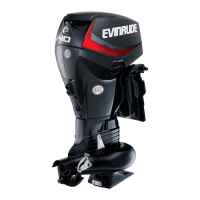
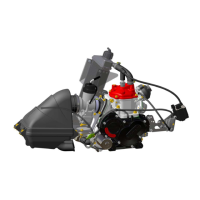

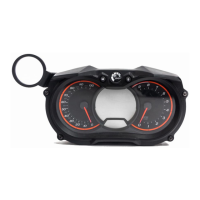



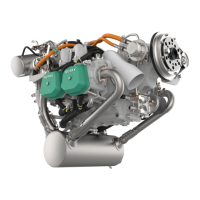

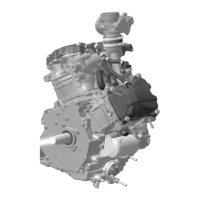

